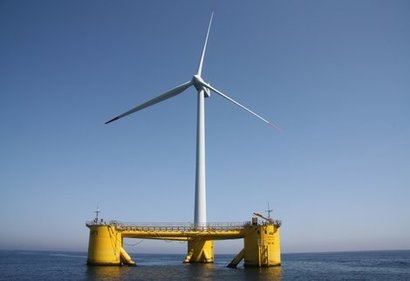
Offshore wind development in these areas will require floating turbine technology. Although fixed-bottom offshore wind was pioneered in Europe, the US now has the opportunity to be a global leader in developing and deploying floating offshore wind.
Countries around the globe are investing in offshore wind with an increasing focus on floating turbine projects. Global investment in offshore wind reached $303 billion in 2020 and more countries are looking to this source of clean energy to meet considerable percentages of their national electricity needs. The US offshore wind industry has seen investments exceeding $3.5 billion and, in 2021, the number of supply contracts that the Network has tracked exceeded 500. Floating offshore wind projects will play a pivotal role in meeting the US national goal to deploy 30 GW of offshore wind energy by 2030, state targets of 32 GW by 2035, and long-term decarbonisation plans out to 2050. The Brief provides an overview of the current state of play for US floating offshore wind and offers recommendations for strategic actions that states should consider to capitalise on this up-and-coming technology.
“Fixed-bottom turbines, which are generally used in water depths less than about 60 metres, currently dominate the global offshore wind industry” said Brandon Burke, vice president of policy and regulatory engagement at the Network. “In the next decade it is likely we will see a tipping point away from fixed-bottom offshore wind turbines and towards floating technology. Floating offshore wind is an unparalleled business opportunity that US companies should embrace – both in the immediate term on the export market, and, once domestic markets have caught up, they can deploy their expertise closer to home.”
Tim Fischer, global director of offshore wind at Ramboll and Chair of the Floating Offshore Wind Working Group, added that floating wind is one key technology enabler that the US will require to achieve its ambitious renewable targets and, as a new technology, the US has the opportunity to become a global frontrunner within this new wind energy sector.
“However, to capitalise on floating wind technology the industry must take a holistic approach that identifies key gaps and solutions” said Mr Fischer. “The Network’s Floating Offshore Wind Working Group was created for this reason and includes key representatives from all sectors that will continue to collaborate to develop solutions and establish a foundation for a successful development of US floating wind.”
The Brief provides an overview of important key developments and serves as a launchpad for the Network’s Floating Offshore Wind Working Group initiative. The Brief:
Examines the five US regions (West Coast, East Coast, Gulf of Maine, Gulf of Mexico, and the Great Lakes) where floating turbines will likely be utilised
Outlines current global capacity and growth trends toward floating offshore wind
Offers recommendations and actions that can be taken now by states interested in utilising floating offshore wind technology.
Considers economic development and supply chain potential for US companies
This Brief was developed through a collaborative effort that leveraged the extensive knowledge base of the Network’s Floating Offshore Wind Working Group, a select group of participants drawn from the Business Network’s Leadership-level membership.
For additional information:

